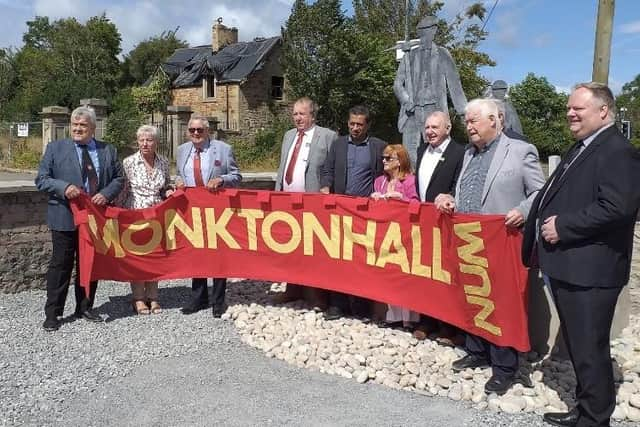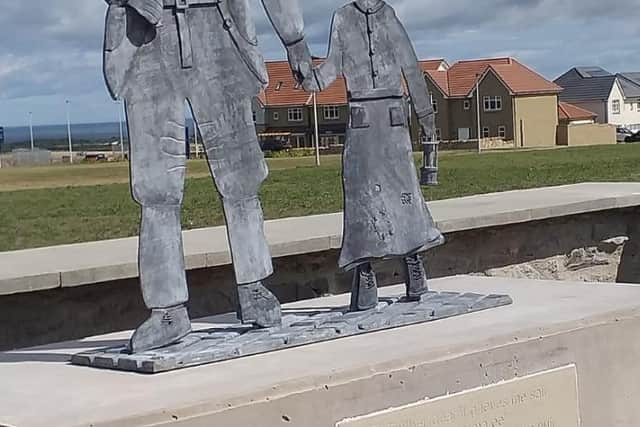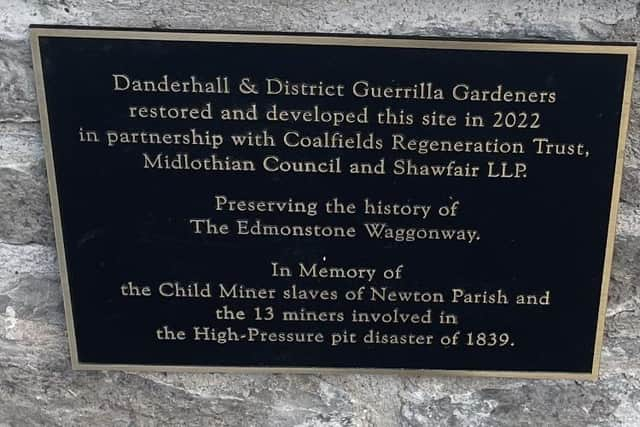Slave miners statue unveiled in Danderhall


Nearly 200 local residents and guests attended the ceremony in Danderhall at the weekend as the work by Graeme Monteith was revealed.
The statue is a central part of restoration work carried out at a former mine site by Danderhall and District Guerrilla Gardeners, supported by Coalfield Regeneration Trust, Midlothian Council and Shawfair LLP.
Advertisement
Hide AdAdvertisement
Hide AdDuring their work they uncovered part of an old colliery waggonway and began researching Edmonstone Colliery, which it was attached to, a mining disaster at the site and the plight of local children who worked in the pits.


Helen Graham from the group said they read the 1840 account of a Childrens Employment Commissioner’s inquiry into conditions in the mines and medical evidence. It described Newton parish, where Danderhall is, as having pits that were the worst in Scotland.
The heart-wrenching accounts given to the commissioner from children working in the mines moved the group to raise funds for the statue to commemorate the workers and their children who were forced to work in the mines and a life of slavery.
The statue, called the slaved miner and his arled daughter, has a stone tablet on its base engraved with two verses of the poem, Lament o’ the Arled bairn written by George Montgomery. Arled children were those whose parents were enslaved to a coalmaster, meaning they were also bound to servitude.
Advertisement
Hide AdAdvertisement
Hide AdThe memorial was officially unveiled by local children with representatives of Monktonhall miners present.


And it included a plaque which remembers the child slave miners and a disaster at the pit in 1838 which saw 13 miners, including a 12-year-old girl and seven-year-old boy, trapped for days before they were miraculously rescued.
Helen said it was the testimonies of the children who worked in Newton Parish which brought about an Act in 1842 which changed the law to make the minimum age of miners 14.
And she said the disaster at the mine was the start of a movement to change conditions in the mines.
Advertisement
Hide AdAdvertisement
Hide AdShe said: “In that disaster was John Nicholson, an arled bairn miner starting work in the pit at age 7, who became president of the Free Colliers of Midlothian and who fought and won his fight for better conditions for miners and for their rights to join a union.
“He campaigned with the first miner MP for here, Alexander MacDonald, a child slave miner too, with the help of Lord Kinnaird whom they met and who took their fight to parliament and won them better rights and conditions.
“The Lord Kinnaird Lodge of the Free Colliers still meets today, in Dalkeith.”